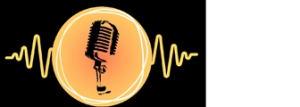Definition
German punk is a genre that erupted in the late 1970s and early 1980s, paralleling the punk movements in the United Kingdom and the United States but with a distinctively German edge. It was more than just a musical style; it was a cultural revolution that challenged societal norms, politics, and the music industry itself. In this article, we will delve into the history, characteristics, key figures, and lasting impact of German punk.
History, Evolution, Cultural Impact and Legacy
- Origin: The roots of German punk can be traced back to the late 1970s when Germany was still divided into East and West. In West Germany, particularly in cities like Hamburg, Berlin, and Düsseldorf, the punk scene began to flourish. This movement was a response to the political tensions, economic disparities, and the perceived cultural stagnation of the time.
- East Germany had its own underground punk scene, which was more politically charged due to the oppressive regime of the GDR (German Democratic Republic). Bands and fans in the East faced significant risks, including surveillance, censorship, and arrest by the Stasi, the East German secret police.
- Social Impact: The impact of German punk extends beyond music. It influenced fashion, art, and lifestyle, promoting individuality and non-conformity. The movement also had a significant political impact, especially in East Germany, where punk was a form of resistance against the regime.
- Legacy: The legacy of German punk is still evident today. It paved the way for various music genres in Germany, including post-punk, indie, and alternative rock. The DIY ethos and critical stance of punk continue to inspire new generations of musicians and fans.
Key Characteristics
- German punk is known for its raw sound, fast-paced rhythms, and aggressive vocals. Lyrics often deal with political and social issues, expressing anger and dissatisfaction with the status quo. The DIY ethic is strong in German punk culture, with bands often producing and distributing their music independently.
- The language used in German punk music is also noteworthy. While early bands were influenced by English-speaking punk and often used English lyrics, there was a significant shift towards German lyrics in the early 1980s. This change allowed bands to connect more directly with their audience and address local issues more pointedly.
Key Figures and Bands
- Die Toten Hosen and Die Ärzte: Die Toten Hosen and Die Ärzte are two of the most iconic bands in German punk history. Both bands emerged in the early 1980s and have enjoyed long-lasting success. Die Toten Hosen are known for their politically charged lyrics and high-energy performances, while Die Ärzte are famous for their humorous and sometimes controversial songs.
- Slime and Razzia: Slime and Razzia are other pivotal bands in the German punk scene, known for their radical political messages and influential sound. Slime’s aggressive style and anti-fascist lyrics made them one of the most important bands in the genre, while Razzia’s music combined punk with elements of other genres, showcasing the diversity within the German punk scene.
German punk was more than just a musical genre; it was a powerful cultural force that challenged authority and inspired change. Its raw energy, political message, and DIY ethos left a lasting mark on the music scene and society. The legacy of German punk continues to influence and inspire, proving that its rebellious spirit is timeless.

